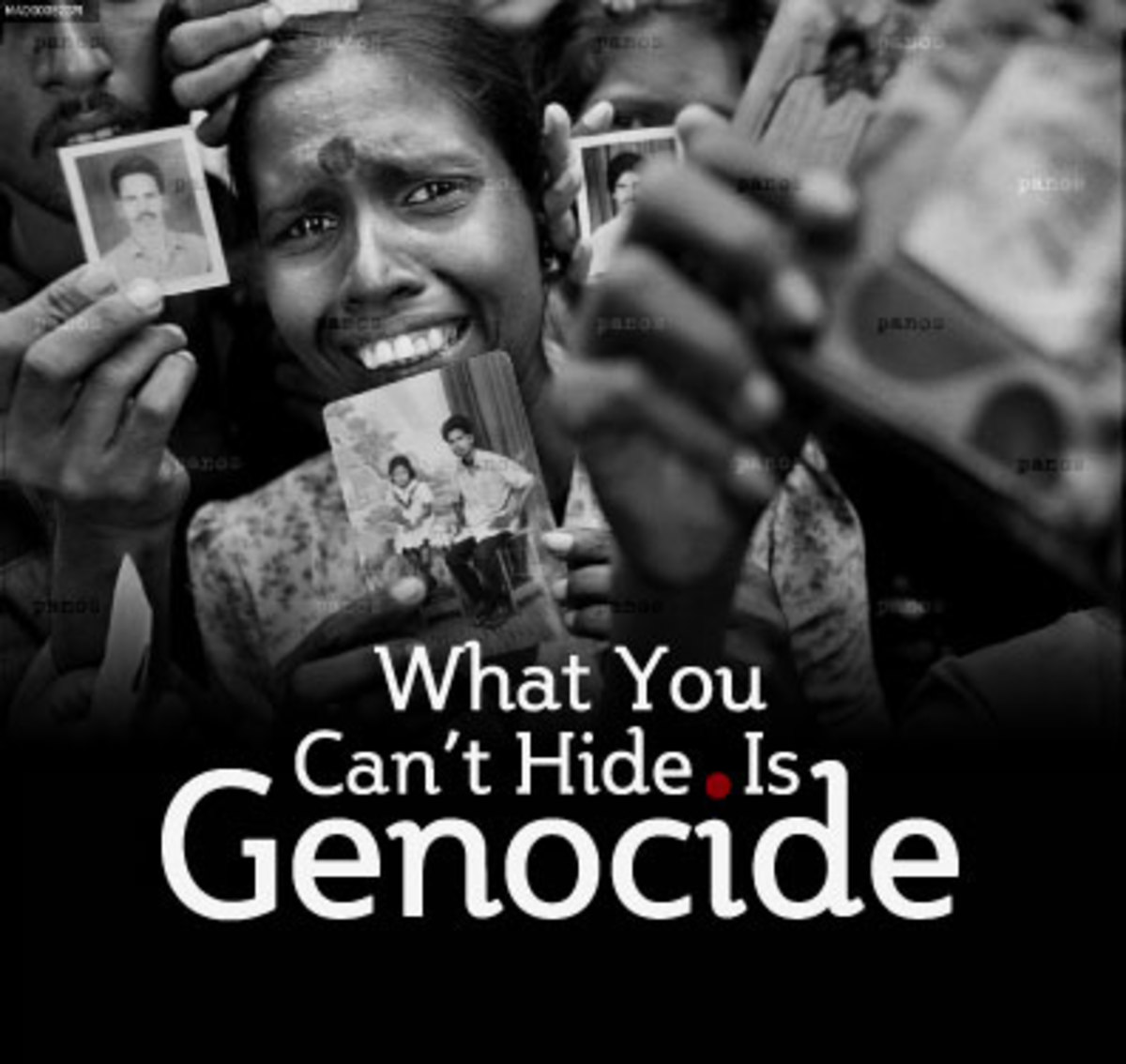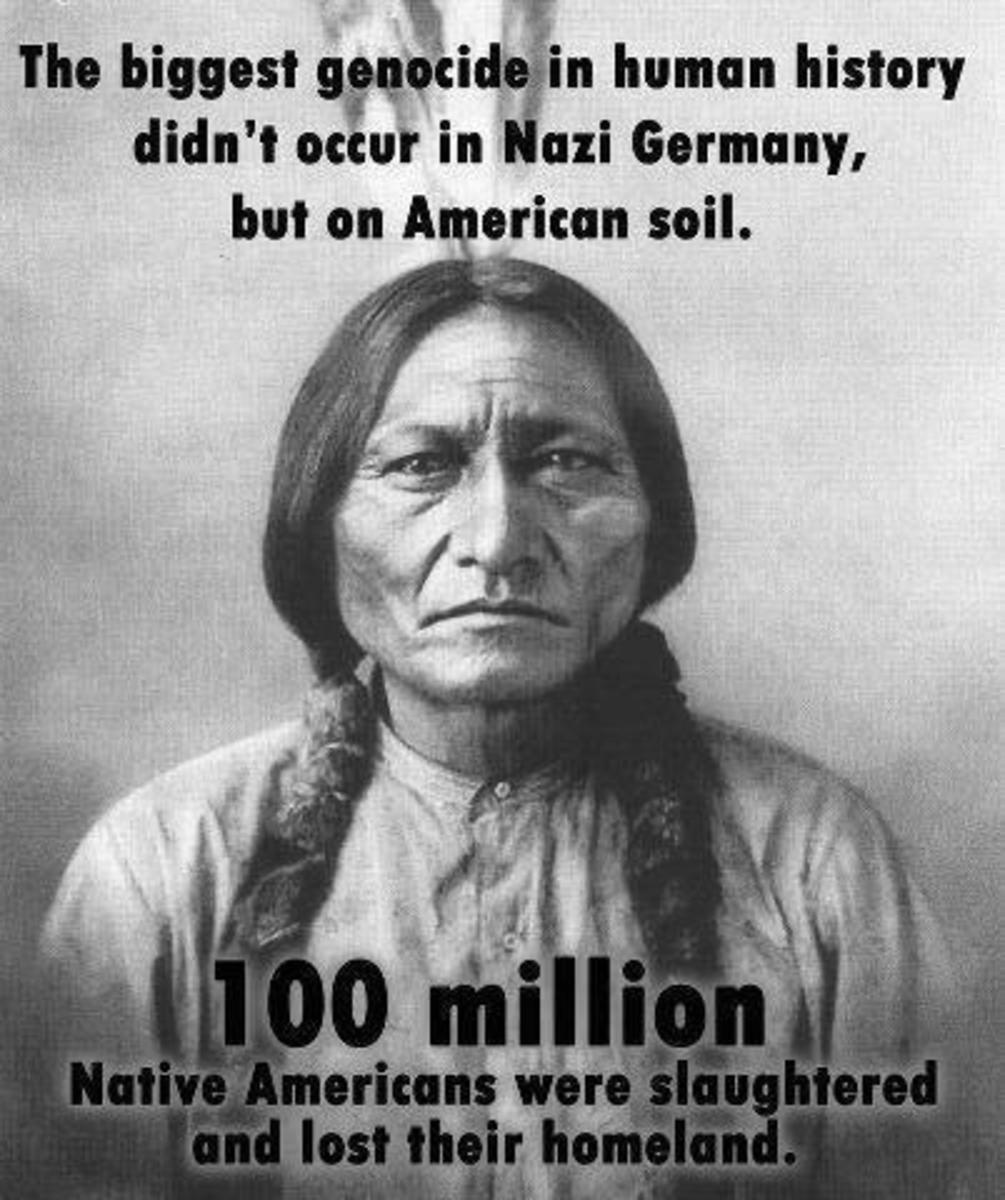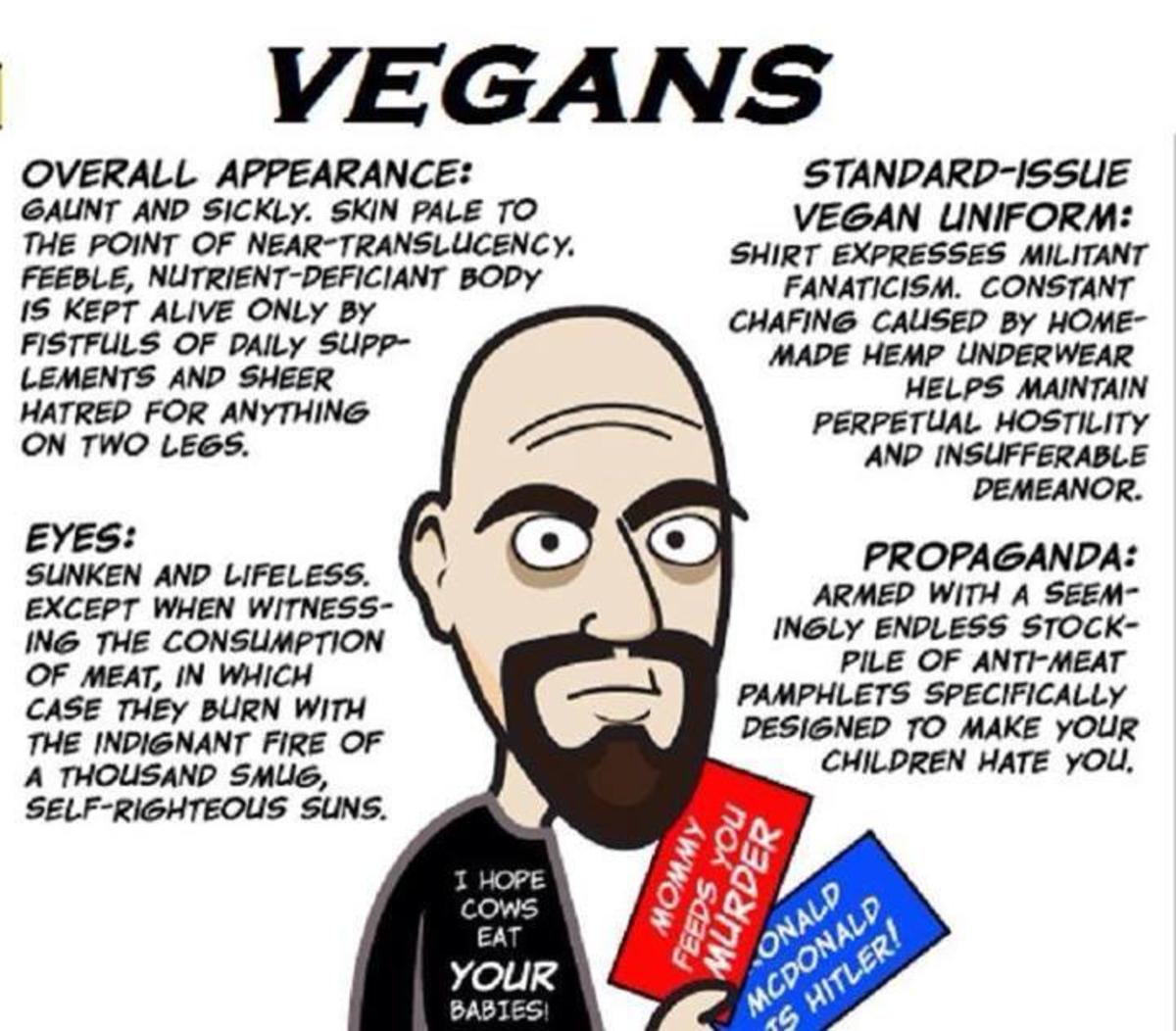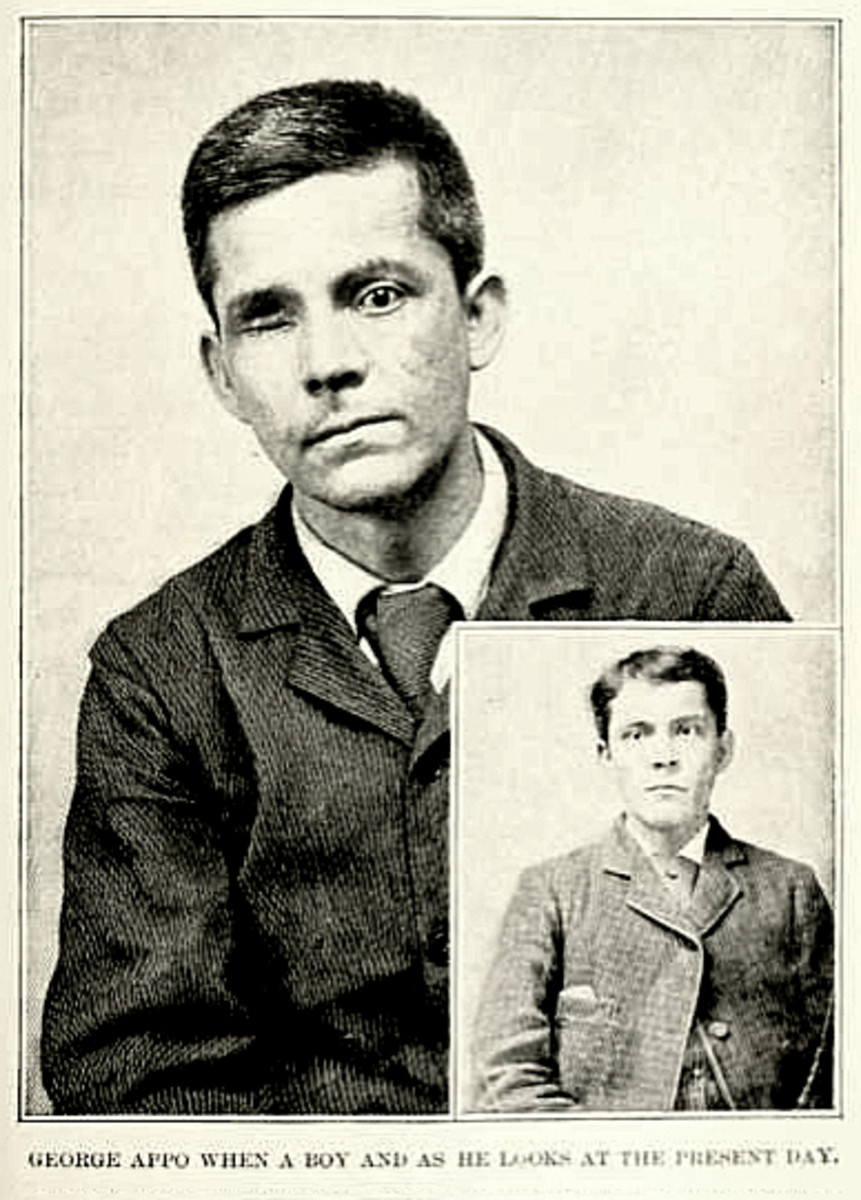- HubPages»
- Education and Science»
- History & Archaeology»
- History of the Modern Era
Top 10 Genocides in the Era of United Nations Convention for the Prevention and Punishment of the Crime of Genocide
Genocide Defined!
United Nations Convention for the Prevention and Punishment of the Crime of Genocide (CPPCG) defines genocide as any acts intentionally committed to harm any group; national, ethnical, racial or religious for (a) Killing its members, (b) Causing serious bodily or mental harm to its members, (c) Imposing conditions of life in order to bring about its physical destruction, imposing population control or other forms of harm committed by anyone (even a legitimate ruler). Figure-1 gives an idea of how the convention defines the crime. Genocide is a crime and is subject to punishment upon establishment.
Overview
The end of World War II and increased awareness on the scale number of killings and the extent of bestiality involved in undertaking such killing operations shattered the level of conscience of each peace loving person in the aftermath of the war. As deterrence against any such holocaust kind of operations, the United Nations General Assembly adopted and ratified the Convention for the Prevention and Punishment of the Crime of Genocide(CPPCG), that entered into force on 12 January 1951. The global convention not only made an effort to define the act of genocide but also made provisions for punishment against such actions. Unfortunately, the occurrence of genocides did not stop with the convention. The post-convention phase also witnessed a number of human sufferings and deaths that may be considered as genocides as per the spirit of definitions by the Convention for the Prevention and Punishment of the Crime of Genocide. This hub highlights some of the major events across the globe that involved killing and deaths of millions of people after 12 January 1951. The list is not comprehensive as we have highlighted only the top 10 of such events. Nevertheless, these events reflect a complete failure, by the generations of our times to learn lessons from the history. At the same time, these events also highlight the seemingly uselessness of such conventions of the United Nations where endorsements to different causes are driven by rather political and diplomatic motives than genuine concerns over the issues.
The Political perception
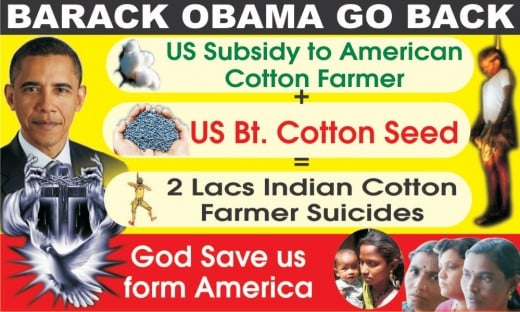
Text of UN Declaration on Genocide
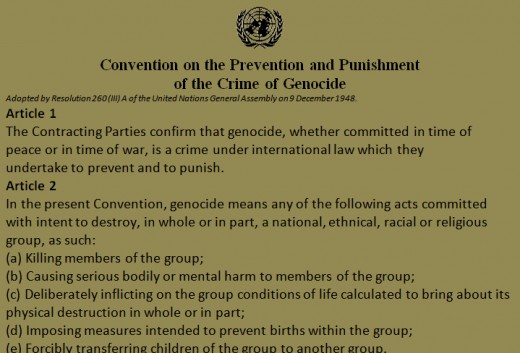
Top 10 Genocides after 1951
One may keep on debating whether a specific world event is genocide. The list below is subject to debate. The bottom-line is, genocides are crimes against humanity and the list below certainly deserves the distinction of crimes against humanity if not necessarily declared officially as genocides. The actual list may be large enough. The author of this hub has only selected a few of them in terms of the size of the death toll. Any omission is purely unintentional. Readers are requested to express their views on the list and correct the author for any mistake and omission. List in Table-1 provides an order of death tolls in these heinous acts of crime against humanity even after declaration of the UN Convention.
Death Toll wise List of Genocides
Conservative Estimate of Civilian Deaths
| Event
| Location
| From
|
|---|---|---|---|
1,000,000
| Cambodian Genocide
| Cambodia
| From 1975 till 1979
|
1,000,000
| Nigerian Civil War
| Nigeria
| From 1967 till 1970
|
500,000
| Rwandan genocide
| Rwanda
| During 1994
|
300,000
| 1971 Bangladesh atrocities undertaken by the Pakistan Army
| Bangladesh
| During 1971
|
300,000
| Suicide by Farmers
| India
| From 1995 ongoing
|
178,258
| Darfur conflict
| Sudan
| From 2003 till 2010
|
100,000
| Massacres ofMaya peoples
| Guatemala
| From 1962 till 1996
|
50,000
| Al-Anfal Campaign
| Iraq
| From 1986 till 1989
|
50,000
| Massacres of Hutus
| Burundi
| During 1972
|
20,000
| Dictatorship and political repression inEquatorial Guinea
| Equatorial Guinea
| From 1969 till 1979
|
A Summary of the Top Genocides after 1951
Note: The list is as perceived by the author and not necessarily an official list endorsed by the UN.
Cambodian Genocide: Cambodian genocide believed as an effort of ethnic cleansing led to a death toll of more than a million ethnic minority populations during a span of 3-4 years by a regime called Khmer Rouge (KR) under the leadership of Pol Pot. Interestingly the regime was able to portray the majority peasant communities as the real nationals led a hatred campaign against the religious minorities as well as other ethnic groups. The other targets of the Khmer Rouge also included officials under the former government regime and anyone with an educational qualification (Kiernan,2003; Frey, 2009 and Alvarez 2001).
Rwandan Civil War
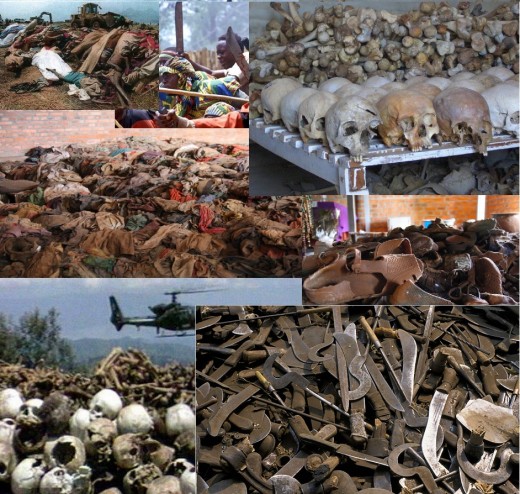
Take this Poll
Do you think UN Agencies are effective in moderation of their own conventions?
Nigerian Civil War: The Nigerian Civil War, that claimed around a million lives between 6 July 1967 and 15 January 1970, was also an ethnic and political conflict believed to have arisen from economic problems and religious intolerances in the Nigerian society. Also known as the Biafran War, caused death of more than a million people from fighting and famine in a span of 3 years of the war. Although the war caused a death of only (small in proportion to total deaths) 75000 in direct fighting and conflicts, the larger tolls were due to forced starvation of regions and forcing people dying of hunger (Polynational War Memorial, 2014). Some of the photographs collected from Internet on the Nigerian civil war are presented in this hub. Nigerian civil war is one of the testimony that to commit the crime of genocide an agency may not use weapons. Creating conditions of distress that can force people die of diseases and hunger is probably a much cheaper way to commit the crime.
Nigerian Civil War Photos
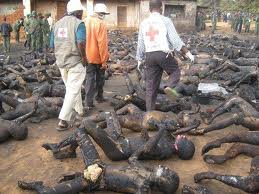
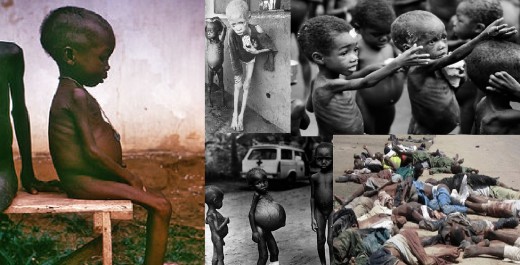
Rwandan genocide: Since the declaration of the UN convention in 1951, Rwandan genocide is probably the first of its kind for which a tribunal was set. The genocide witnessed killing of civilians in a mass scale. The International Criminal Tribunal for Rwanda convicted around 50 masterminds for their role in Rwandan civil war. Around 120000 people associated with the killing of people were arrested and 60000 of them were found guilty. In a very inhuman manner the genocide also created a sense of distrust on one's perceived sense of humanity around the world as many of the mass killings actually happened in front of global media. The mode of killing was also brutal in a sense that barring a few cases where the militants and army units used bullets to kill people, in most cases killings were done by knives and machetes. Apart from murders, gender targeted crimes like rape was also used against women from the Tutsi community, against Hutu women who married Tutsis and against female members of Hutu communities who provided shelter to Tutsis. Rape and torture was used as a weapon to create terror as most of the rapes and murders against women were organised and undertaken in public places forcing bystanders to watch the crime. Most of these killings happened in a short span of 100 days (de Brouwer and Anne-Marie. 2005).
Cambodian Genocide
Farmers’ Suicide in India:
Probably the most silent of all crimes discussed in this hub is the farmer’s Suicides in India. The issue increasing occurrence of farmer suicides was initially highlighted by a reporter from a National newspaper during early 1990s when India adopted economic reforms under the Structural Adjustment Programmes. It became a policy concern when media highlighted the stories of families and conditions in which they committed suicide and the Ministry of Home Affairs started reporting the numbers of farmers committing suicide in its annual survey titled “Accidental Deaths and Suicides in India. Since then more than 300 thousand farmers, mostly debt ridden, have already committed suicides in the Indian countryside so far. One may not consider the suicide by farmers in India as a case of genocide or an organised crime against a section of group. Coincidentally, since 1990s, India also witnessed a consistent growth in its national income measured through its Gross Domestic Product and is being termed as an emerging giant along with China as the future economic leaders of the world. However, many notable economists and scholars in the country find a link between the policies adopted by successive governments in India since 1990s as “The Suicide Economy of Corporate Globalisation” and blame the governments for deliberately adopting wrong policies and being apathetic towards the interests of farmers who constitute around 60 per cent of country’s work force. Many also link this as an attempt to land grab by the corporate sector for purposes other than agriculture. While the corporate world cheers for an economy showing growth and enjoy several forms of tax benefits, most of the countryside suffers from poverty huger, debt burden and other forms of distress primarily because of the apathy of the rulers. As per an estimate, the total amount of tax benefits to the corporate sector during 2013-14 was around 8 per cent of the National GDP. Proponents of economic reforms who have forced the economy to transit from an active welfare state to an orientation towards market led economic growth s strategy may be blamed.
The table presented above show some other countries as well where Genocide happened after 1951. We have not described those here. Readers are requested to use the comment box for additions and omission of events of crime against humanity.
List of References and Image Sources
Auron, Yair, The Banality of Denial, Transaction Publishers, 2004
Kiernan, Ben (2003). "Twentieth-Century Genocides Underlying Ideological Themes from Armenia to East Timor". In Robert Gellately, Ben Kiernan. The Specter of Genocide: Mass Murder in Historical Perspective. Cambridge University Press
Alvarez, Alex (2001). Governments, Citizens, and Genocide: A Comparative and Interdisciplinary Approach. Indiana University Press
Frey, Rebecca Joyce (2009). Genocide and International Justice. Facts On File
de Brouwer, Anne-Marie L. M. (2005). Supranational Criminal Prosecution of Sexual Violence: The ICC and the Practice of the ICTY and the ICTR. Antwerp and Oxford: .
Shiva, Vandana and Jalees Kunwar Farmers Suicides in India, Farmers Suicides in India
Research Foundation for Science, Technology and Ecology
Polynational War Memorial. Retrieved 20 March 2014 <http://www.war-memorial.net/Nigerian-Civil-War--3.140)
Farmer Suicides India
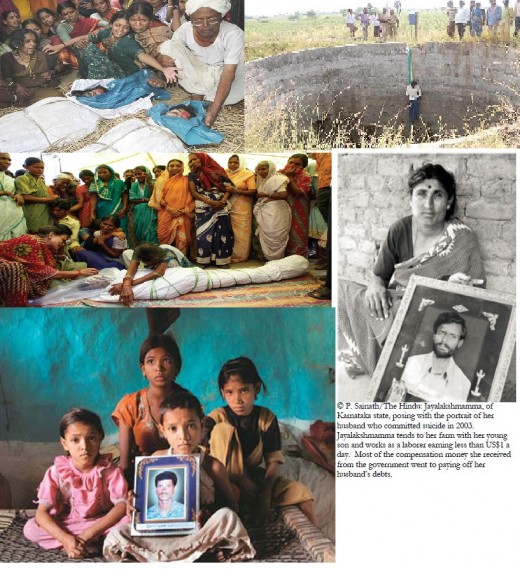
Image Sources


